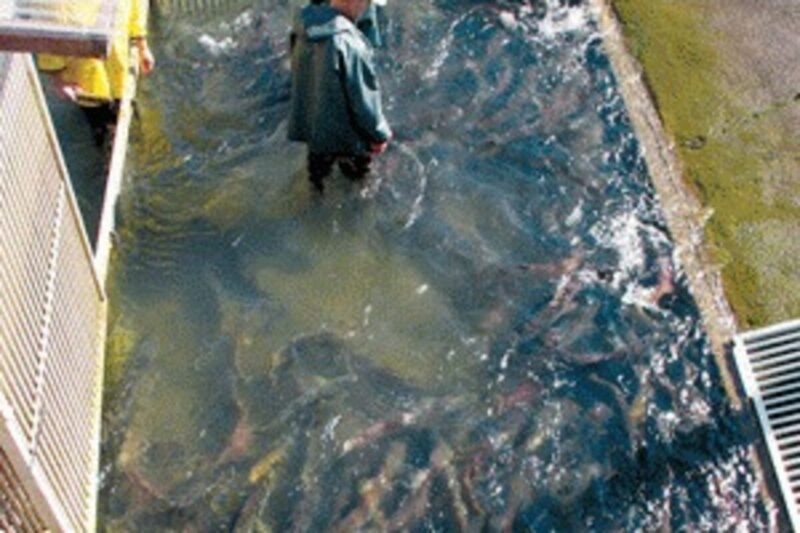Scott Swanson
Of The New Era
For the third straight year – and the figures are no surprise to fishermen on the South Santiam River – spring Chinook salmon returning to the South Santiam Fish Hatchery at Foster Dam have been less numerous than average.
Hatchery Manager Brett Boyd said that this year’s count on summer Chinook was 1,335 as of last week. The average return over the past 24 years is 4,200.
“We weren’t alone,” Boyd said, noting that the McKenzie and Willamette hatcheries also had fewer salmon return than normal. “The returns were low on all the systems.”
Boyd said summer steelhead returns were much better, numbering 4,025 this year, just under the 24-year average of 4,800.
As of July 17, the count of salmon crossing Willamette Falls was 22,351. Last year the total was about 36,000, and it was 35,000 in 2005, after 95,000 were counted in 2004.
Boyd said that though the Willamette Falls count is only a predictor, it does indicate what kind of run is likely.
All hatcheries have made broodstock goals, which means enough fish returned to provide them with eggs and sperm necessary spawn next year’s young salmon and steelhead, which will be released into the rivers on which the hatcheries are located. The number of eggs harvested at South Santiam is 1.9 million, of which approximately 1.1 million actually produce fingerlings.
South Santiam releases 300,000 smolts, 6 to 8 inches long, each Nov. 1, and another 300,000 each Feb. 15. Soon thereafter, it releases another 150,000. The fish are actually hatched at Willamette Hatchery and raised there until they are moved to South Santiam, which doesn’t have space to raise that many fish, Boyd said.
Three or four years after they are released, the fish come home – at least some of them.
“Ocean conditions are unpredictable,” Boyd said. “When the fish are leaving the rivers, the water’s low when they’re released so they are more susceptible to predators or diseases. It’s harder for them to get to the ocean.”
Karen Hans, an Oregon Department of Fish and Wildlife biologist, said that salmon are at risk at every turn during their lives.
“The challenge with the salmon is that they have such a varied and dramatic life cycle,” she said. “The spawning habitat for fish when they first hatch out, the rearing habitat for a year or more in freshwater, downstream migration challenges, then the estuary, then the ocean for several years.
“If the winds don’t blow and there isn’t any upwelling, if they don’t have food sources, then they have the challenge of going upstream. Natural barriers can present different challenges.
“When you try to look at why the run is down this year, you’ve got to go back to look at eight different areas where it could have been bad for fish,” she said. “It’s really challenging. We just keep trying to work on it one piece at a time. We try to fill in the holes and make things better for the fish.”
Hans said this year, despite a little rain in August, streams are down and salmon can’t make it up some of the creeks.
“Wiley Creek is too low for salmon to spawn,” she said last week. “When they can’t go up the creeks, they’ll spawn in the South Santiam River.”
Boyd said the counts of mini jack salmon were “really big” this year, which indicates that a good run might be possible for 2009.
“All it tells us is that there’s been a good survival rate to the ocean,” he said. “Plankton counts, turbidity, all of that plays into it.”
Hans said the salmon are “remarkable” for their ability to survive when given a chance. She cited the example of the Toutle River, which was devastated by the Mt. St. Helens eruption in 1980. Within a few years, salmon were moving back into the river, which had been impassable since the eruption.
“They have a real resilience,” she said. “Given the opportunity, they will recover. “





